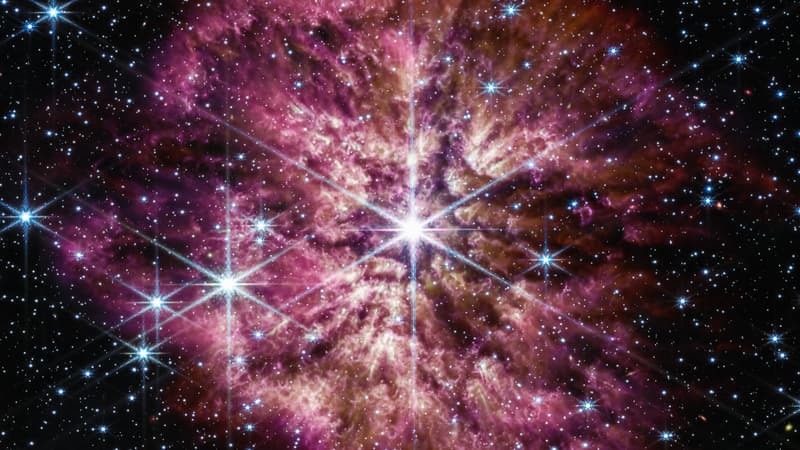NASA revealed a stunning new image of an exploding star on Tuesday, taken by the James Webb Space Telescope. It shows a star called Wolf-Rayet, called WR 124, about 15,000 light-years away, in the constellation Sagittarius, which means that light from this star traveled through space for 15,000 years before reaching the James-Rayet detectors. Webb.
Wolf-Rayet stars are among the most massive known. They are relatively short-lived in cosmic time (a few million years) and then explode at the end of their lives as a supernova.
The image captured by James-Webb thus shows the moment in which the star ejects the material that surrounds its nucleus, just before the explosion.
A mass 30 times greater than that of our Sun
“The detailed images of WR 124 captured by Webb forever preserve a brief and turbulent moment of transformation and promise discoveries that will unravel the mysteries of cosmic dust,” NASA wrote in a statement.
In fact, stars only briefly go Wolf-Rayet before exploding in a supernova, making the phenomenon very rare to observe. WR 124 has a mass 30 times that of our Sun and has shed an amount of matter equivalent to 10 suns.
As the ejected gas moves away from the star and cools, cosmic dust forms and glows in infrared light detectable by James-Webb infrared cameras. We can see, in purple and red tones, the halo of gas and cosmic dust around the star, which shines in the center of the image.
The mysteries of cosmic dust
This halo then contains the heavy elements that make up the modern universe, including life on Earth. Stardust remains largely a mystery to scientists.
“I think this is one of the most beautiful concepts in all of astronomy,” Amber Straughn, an astrophysicist at NASA’s Goddard Space Flight Center, said during a presentation, Forbes reports.
“It’s the fact that the iron in your blood and the calcium in your bones were literally forged inside a star that exploded billions of years ago. That’s what we see in this new image. This dust is spreading everywhere. the cosmos and will eventually create planets. And that’s how we got here.”
Dust is integral to how the universe works: it harbors forming stars, it gathers together to help form planets, and it serves as a platform for the formation and aggregation of molecules, including the building blocks of life on earth.
Tools like the James-Webb telescope could shed new light on this dust and help understand what happened in the early days of the universe.
Source: BFM TV


